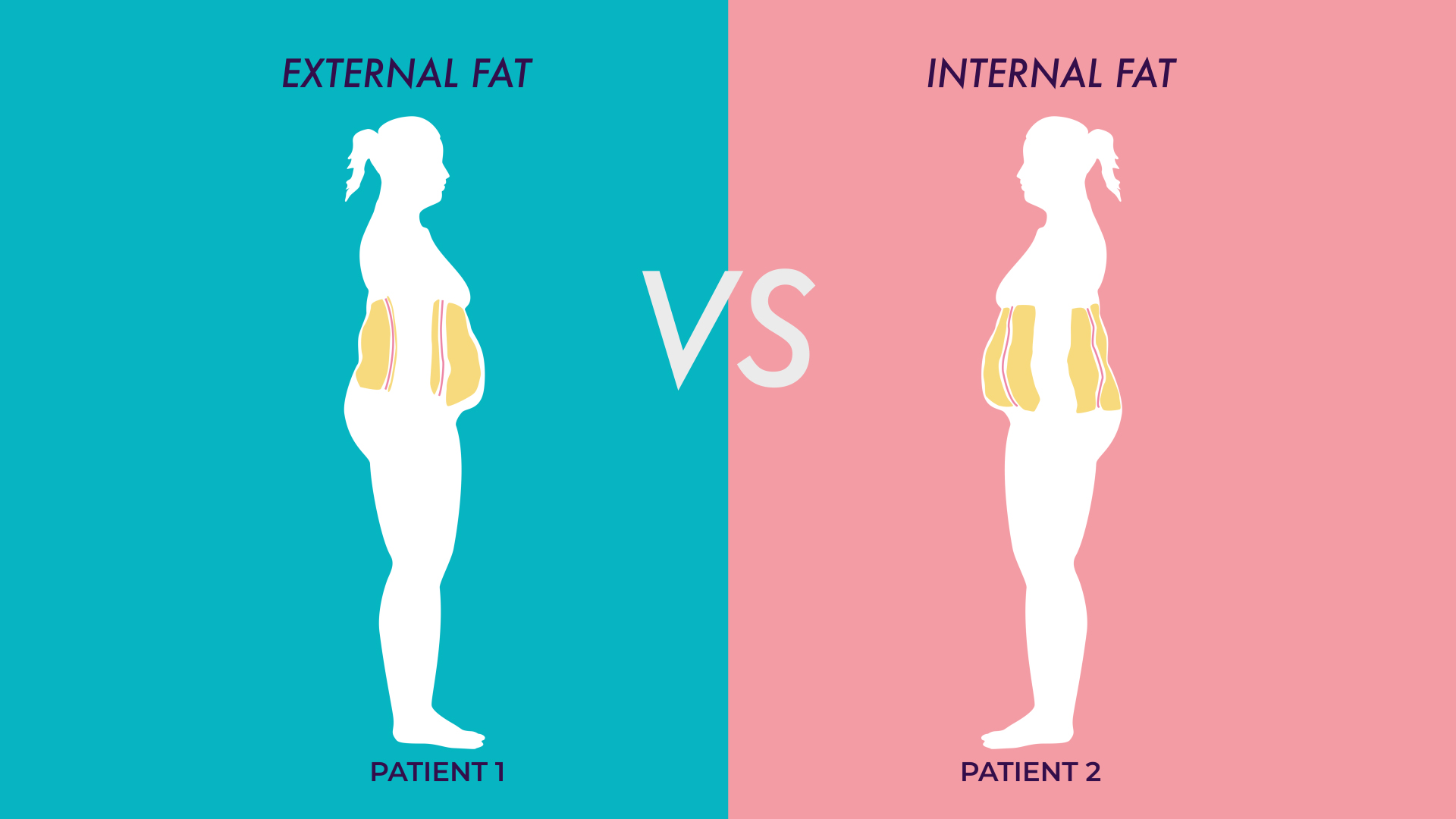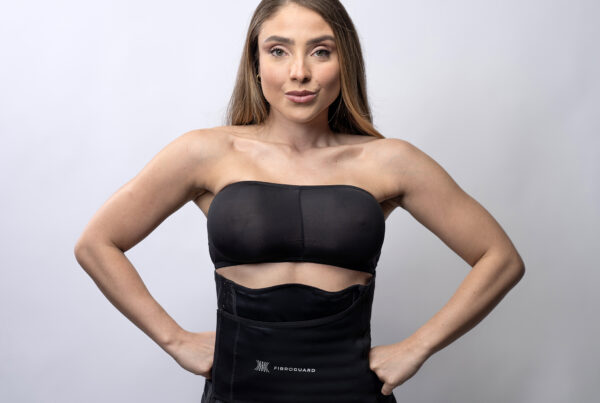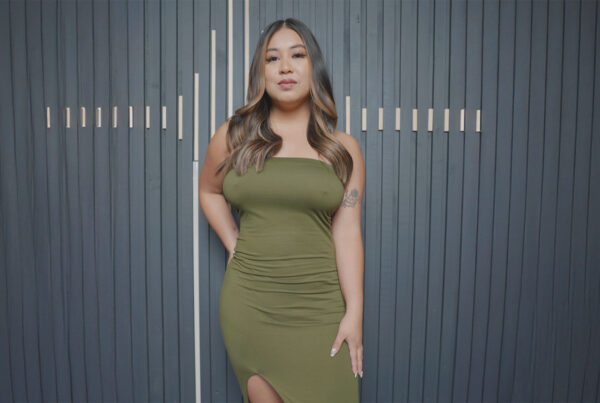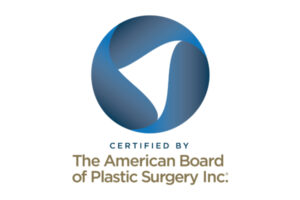A while back I made a video filled with great graphics to discuss Internal Vs. External fat when it comes to liposuction. Taking aim at tummy fat requires looking into what kind of fat we are dealing with. It was a very popular video. Based on the number of questions I was getting I realized I had to make a follow-up video to discuss how you can tell whether or not you have internal or external fat.
Now, for many people, it is much easier to understand things watching a “how to” video however, for some people it may be challenging to watch procedural videos. So I decided to share a blog on some of the vital information that you need to know about “how to tell if you have internal or external fat”.
Using a patient as a model who was getting a Tummy Tuck 10 (which is Lipo 360° then a tummy tuck to remove the skin) I was able to show viewers that in addition to being a good candidate for Lipo because of her external fat, that she also was going to have to lose some of that internal fat for her tummy to be perfectly flat. I recommended that she try to lose weight after surgery to help get that super flat tummy because excess internal fat isn’t good for your health.
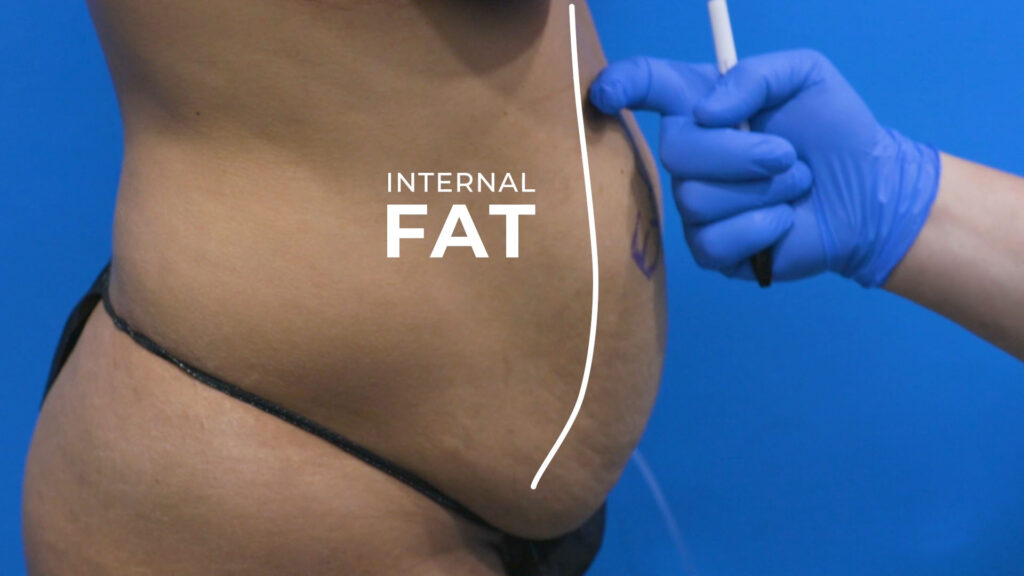
Body fat is kind of like real estate because location counts! For most people, about 90% of their body fat is subcutaneous, which I call “External fat” and it’s the kind that lies in a gelatinous layer just beneath your skin. Visceral fat or what I call “Internal fat” is found in the spaces around the liver, intestines, and other organs and is also stored in the “omentum”, the apron-like flap of tissue that lies under the belly muscles.
There is evidence that the internal fat deposits deep within the abdomen can be peskier than the external fat that you can pinch with your fingers. Even though it only makes up a small proportion of body fat, it’s a key player in a variety of health problems and several chronic conditions. What this meant for my patient was that I could remove the external fat and the skin in the tummy tuck but in order for her tummy to get nice and flat, she was going to have to remove the internal fat on her own, through diet and exercise.
In the video, before surgery, you can see that it is very easy when I pinch the skin in the tummy area on my patient, that it is soft and dimpling “external fat”. By placing my hand where her abdominal wall is I show the point that separates the internal fat from the external fat. When the patient stands sideways and I gently push in on her tummy, you can see it even better.
What’s interesting is that the shape of the back and the shape of the front are really connected. When someone has quite a Lordosis (a big curve inward in their lower back), it doesn’t allow a lot of room for the internal fat in the back, or around the organs- so it comes out to the front!
In my video, I get to show you my patient in the operation room so you can really understand the difference between internal and external fat. It’s fascinating, educational, and will help you understand the different types of body fat.
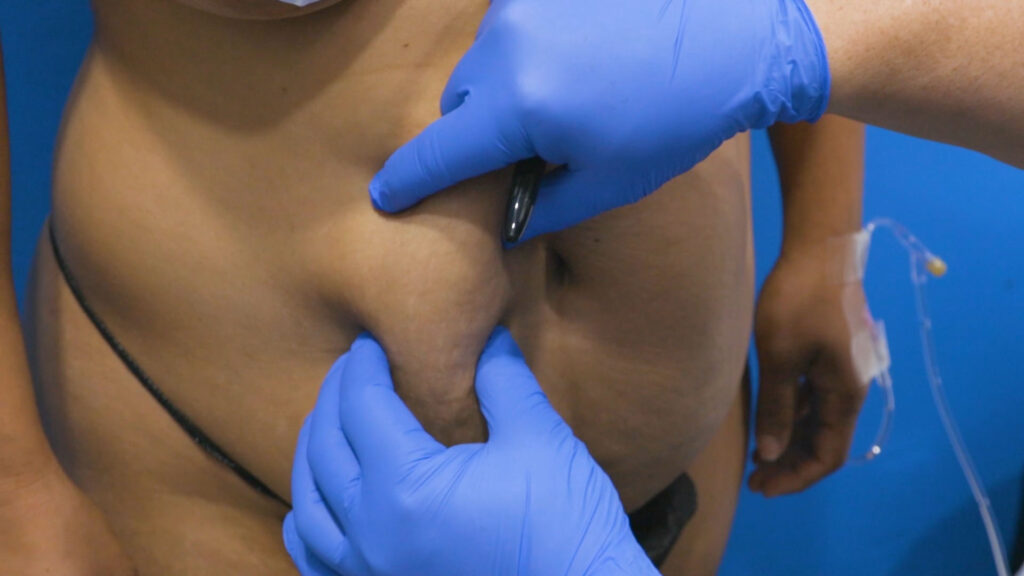
You can see that my Tummy Tuck 10 patient has a decent amount of external fat and skin that can easily be removed. You also get to see exactly where I meet the resistance at the abdominal wall – and I cannot remove any fat that is on the inside of the abdominal wall. She’s going to look flatter when I remove the external fat and the skin but she’s not going to look perfectly flat.
So, here’s the bottom line-if you poke your belly, the fat that feels soft is subcutaneous or external body fat. You may or may not have too much internal fat. That is something we can find out during a consultation. But if you have been noticing that your waistline is growing by inches, it may also be visceral fat pushing out against the abdominal wall.
The places where you gain fat can depend on genes, hormones, age, and whether you’ve had children to name a few. But here’s what you can do to start working on optimum health and getting rid of that internal fat right away:
- Keep On Moving!
- Eat A Clean Balanced Diet
- Don’t Smoke
- Get plenty of Sleep
- Mind Your Moods!
You can view this video at: How can I tell if I have INTERNAL or EXTERNAL fat?


